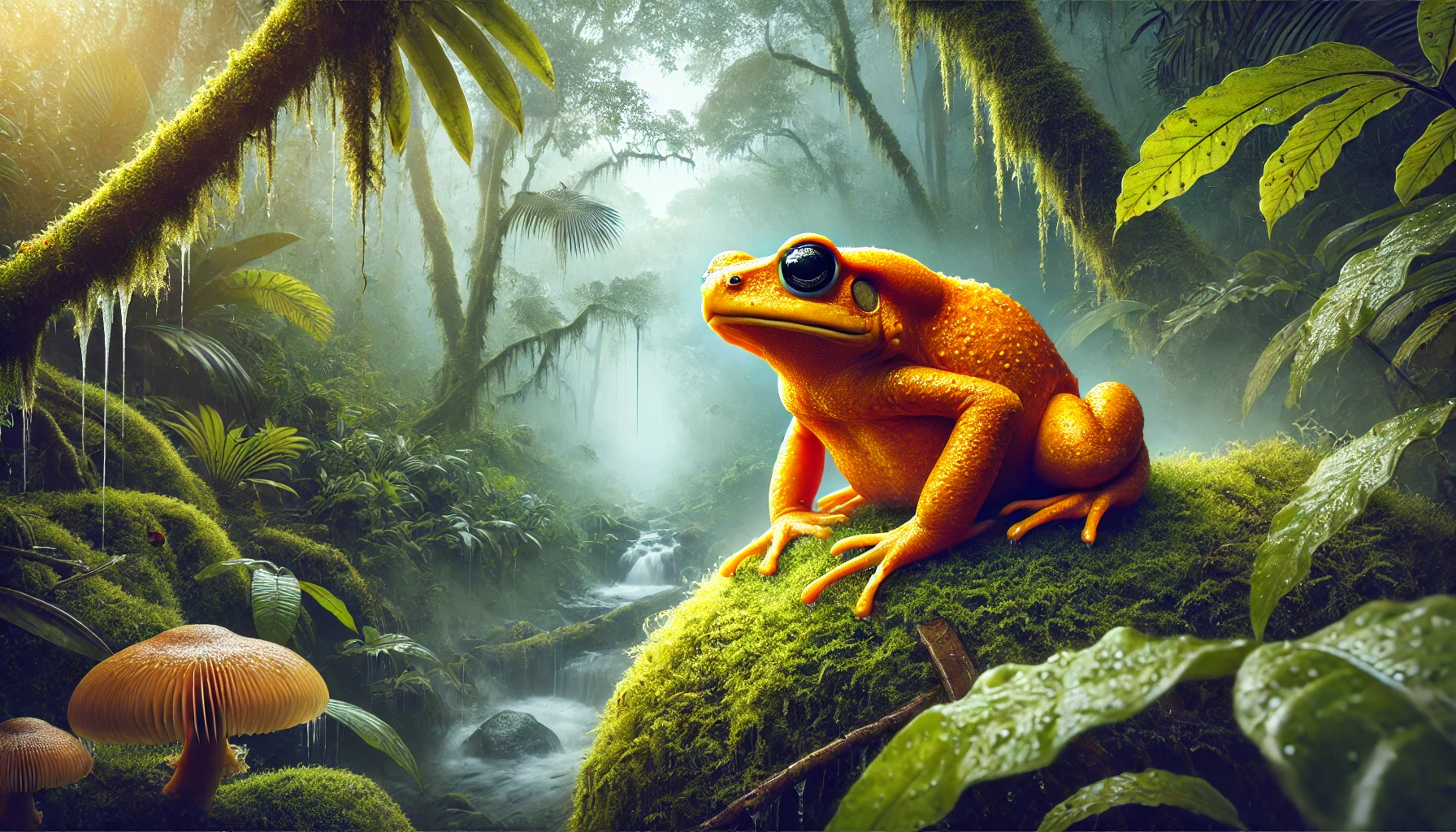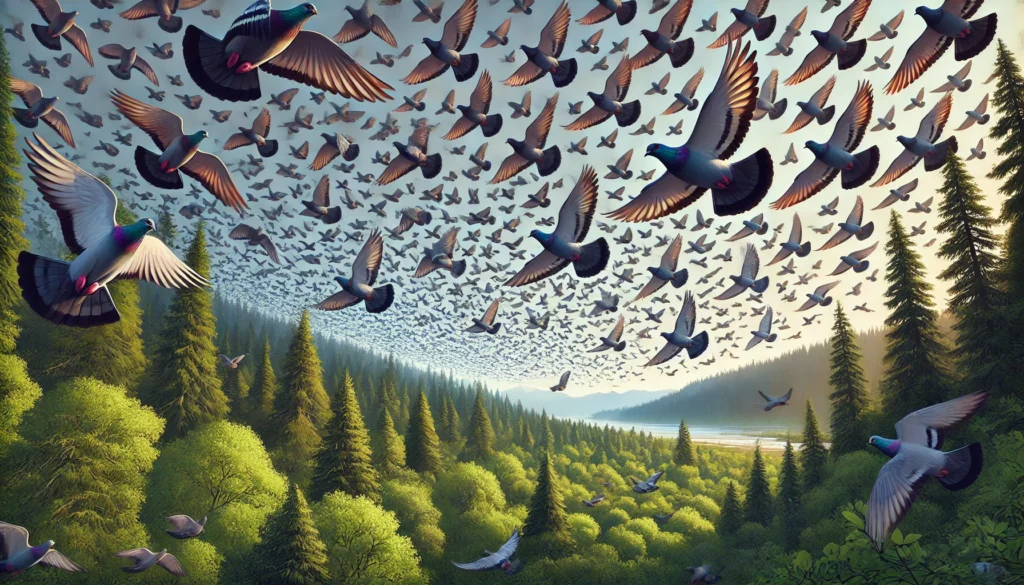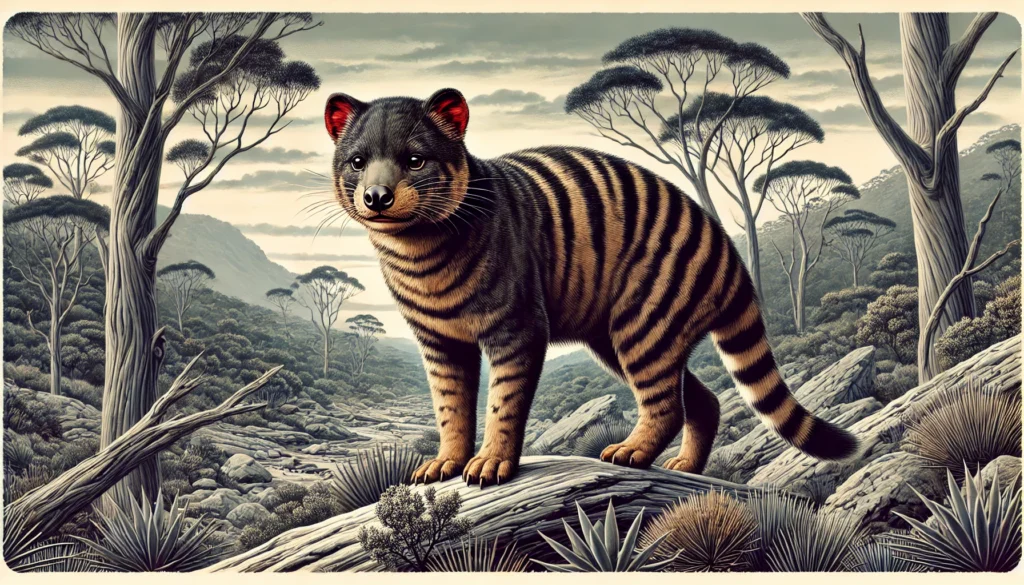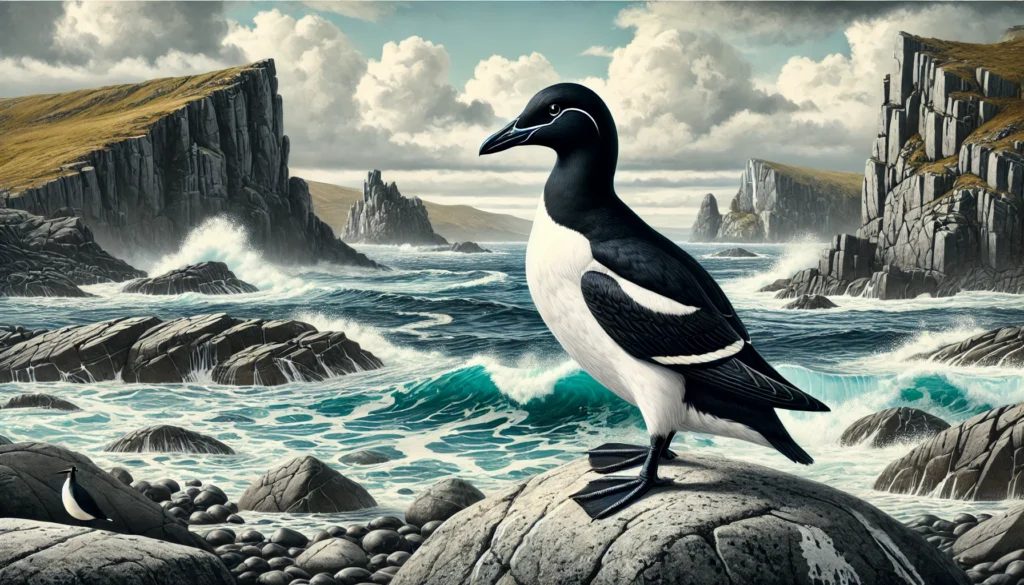
1. The Passenger Pigeon: A Sky Darkened Forever

Introduction to the Passenger Pigeon
Once upon a time, the passenger pigeon (Ectopistes migratorius) was the epitome of abundance in North America. These birds were so numerous that their flocks could stretch over a mile wide and take hours to pass overhead. Described by naturalists as one of the most awe-inspiring phenomena of the natural world, the passenger pigeon was not just a bird; it was a force of nature. It played a vital role in its ecosystem, contributing to seed dispersal and forest health.
However, despite their vast numbers—estimated at over 3 billion in the early 19th century—these birds vanished entirely within a few decades. The story of their extinction is a haunting reminder of how human actions, even seemingly small ones, can cascade into devastating outcomes.
Biology and Behavior
Passenger pigeons were medium-sized birds with a streamlined body, long tail, and pointed wings, making them excellent fliers. They had iridescent feathers that shimmered in sunlight, giving them an almost magical appearance. These birds were social to a fault, nesting in massive colonies with up to 100 nests per tree.
Their diet mainly consisted of acorns, chestnuts, berries, and seeds. Passenger pigeons played a crucial ecological role by spreading seeds far and wide, fostering forest regeneration. They also formed a key link in the food chain, feeding predators like hawks and owls.
Human Impact and Extinction
The rapid extinction of the passenger pigeon was primarily driven by two factors: habitat destruction and unregulated hunting. As European settlers expanded westward, vast swaths of forest—where passenger pigeons nested and fed—were cleared for agriculture. This deforestation fragmented their habitat, making it difficult for the birds to find safe breeding grounds.
Yet it was human hunting that delivered the fatal blow. Passenger pigeons were killed on an industrial scale, often using nets and shotguns. Their meat, considered cheap and abundant, was sold in urban markets and fed to slaves and the poor. Railroads and telegraphs made it easier to locate and transport the birds, accelerating their decline.
By the late 1800s, the population had dwindled so much that their legendary flocks were reduced to mere anecdotes. The last wild passenger pigeon was shot in 1901, and by 1914, the final captive pigeon, named Martha, died in the Cincinnati Zoo.
Legacy and Lessons
The extinction of the passenger pigeon is often cited as one of the first instances where humans realized their capacity to wipe out an entire species. It led to the creation of conservation laws and movements aimed at protecting wildlife. Today, the passenger pigeon serves as a symbol of lost abundance and a stark warning of the need for sustainable living.
2. The Thylacine: A Predator Silenced

Introduction to the Thylacine
The thylacine, or Tasmanian tiger, is one of the most enigmatic creatures to have ever roamed the Earth. Known for its dog-like body and distinctive tiger-like stripes, the thylacine was a marsupial apex predator native to Tasmania, mainland Australia, and New Guinea. Despite its fascinating biology and unique place in the ecosystem, the thylacine was hunted to extinction by European settlers who wrongly blamed it for livestock losses.
Biology and Behavior
The thylacine was a marvel of evolution, a carnivorous marsupial with traits resembling both cats and dogs. It had a stiff, kangaroo-like tail, tiger-like stripes, and a jaw that could open to an extraordinary 120 degrees—allowing it to crush bones with remarkable efficiency.
Thylacines were nocturnal and elusive, hunting small prey like kangaroos, wallabies, and birds. They lived in dens and raised their young in pouches, much like kangaroos. Despite being labeled as livestock killers, evidence suggests they rarely targeted sheep or cattle.
Human Impact and Extinction
European settlers in Tasmania viewed the thylacine as a threat to their burgeoning sheep industry. Bounty systems encouraged widespread hunting, with individuals earning cash rewards for every thylacine killed. Combined with habitat destruction and competition from introduced species like dogs, the thylacine’s population plummeted.
The final blow came in 1936 when the last known thylacine, Benjamin, died in captivity at Hobart Zoo. Efforts to capture and breed remaining wild thylacines failed, leaving the species officially extinct.
Legacy and Symbolism
The thylacine has become an icon of extinction and the environmental consequences of human activity. Efforts to “de-extinct” the species using DNA have sparked debate about whether humanity can or should undo its ecological mistakes.
3. The Golden Toad: The Bright Spark That Faded

Introduction to the Golden Toad
The golden toad was a tiny, brightly colored amphibian that once thrived in the high-altitude cloud forests of Costa Rica. First discovered in 1966, this jewel of the forest became a symbol of biodiversity. However, its brilliant orange glow faded quickly, with the species disappearing entirely within two decades.
Biology and Behavior
Golden toads were known for their striking coloration and small size. Males were a vibrant orange, while females were more muted, with mottled patterns of yellow, black, and green. They lived in a unique habitat of cool, misty cloud forests, dependent on seasonal rains for reproduction.
During mating season, golden toads gathered in temporary pools to breed. However, this dependency on specific environmental conditions made them vulnerable to changes in their habitat.
Human Impact and Extinction
The golden toad’s decline was primarily due to climate change and a fungal disease called chytridiomycosis. Rising temperatures disrupted their breeding cycles, while the fungus spread rapidly through amphibian populations worldwide. Deforestation further fragmented their already limited habitat, hastening their extinction.
By 1989, no golden toads could be found, and the species was declared extinct shortly afterward.
Legacy and Implications
The loss of the golden toad is a stark warning about the effects of climate change and disease on biodiversity. It underscores the delicate balance required for species to thrive and the urgency of protecting vulnerable habitats.
4. The Great Auk: The Penguin of the North

Introduction to the Great Auk
The great auk was a large, flightless seabird that inhabited the rocky coasts of the North Atlantic. Standing nearly three feet tall, it resembled a penguin and was highly adapted to life in the water. However, its inability to fly made it an easy target for humans.
Biology and Behavior
Great auks were expert swimmers, using their wings to “fly” underwater in pursuit of fish. They nested in dense colonies on isolated islands, laying a single egg each year. Their small clutch size made them particularly vulnerable to overexploitation.
Human Impact and Extinction
Humans hunted great auks for centuries, exploiting them for food, oil, and feathers. The birds were easy prey, herded onto ships or killed en masse during breeding seasons. By the early 19th century, their populations had collapsed.
The last known pair of great auks was killed in 1844 on Eldey Island, marking the end of a species that once thrived across the Atlantic.
Legacy and Symbolism
The great auk’s extinction highlighted the destructive potential of unregulated exploitation. Today, it serves as a reminder of the importance of protecting species from overhunting and habitat destruction.
5. The Baiji: The Silent River Spirit

Introduction to the Baiji
The baiji, or Yangtze River dolphin, was known as the “Goddess of the Yangtze.” This freshwater dolphin was revered in Chinese folklore and lived exclusively in the Yangtze River. Its graceful movements and unique snout made it a symbol of natural beauty.
Biology and Behavior
Baijis were small dolphins with pale, almost ghostly coloration and a long, narrow snout. They relied on sonar to navigate the murky waters of the Yangtze, where visibility was often near zero. These gentle mammals fed on small fish and crustaceans.
Human Impact and Extinction
The industrialization of the Yangtze River in the 20th century devastated the baiji’s habitat. Pollution, overfishing, and ship traffic disrupted their environment, while dam construction fragmented their population. Despite conservation efforts, the last confirmed sighting occurred in 2002, and the species was declared functionally extinct in 2006.
Legacy and Mourning
The loss of the baiji is a profound tragedy, symbolizing the cost of unchecked industrial development. It serves as a wake-up call to prioritize environmental sustainability and protect other endangered river species.








Thank you for your sharing. I am worried that I lack creative ideas. It is your article that makes me full of hope. Thank you. But, I have a question, can you help me?
Can you be more specific about the content of your article? After reading it, I still have some doubts. Hope you can help me.